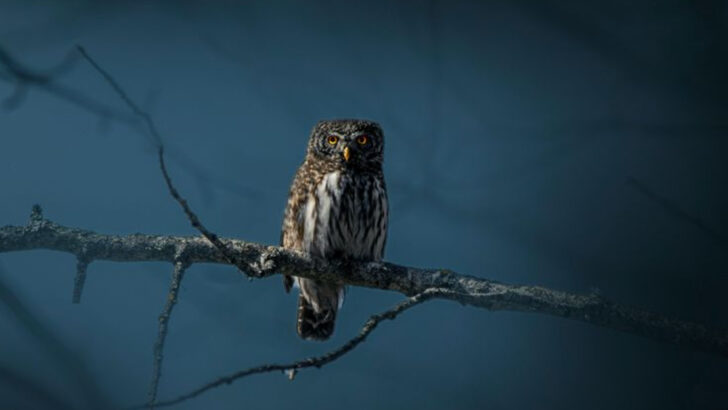Some animals have a way of navigating the world when most of us are stumbling around in the dark. Their eyes are built to catch even the faintest glimmers of light, giving them a sharp advantage once the sun goes down. It’s a fascinating mix of biology and evolution that lets them move with confidence when night falls.
From tiny creatures that rely on stealth to larger animals hunting under the cover of darkness, these night-vision experts show just how diverse nature can be. Understanding how they see the world after dark reveals a whole side of animal behavior that’s easy to overlook.
Owl
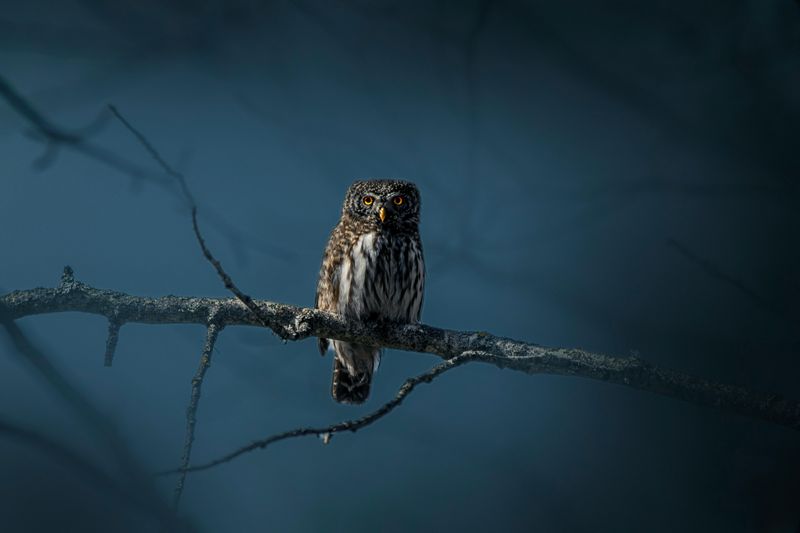
With eyes that are not only large but also incredibly powerful, owls are masters of night vision. Their eyes are so specialized they can’t move, giving them a fixed gaze. This limitation is countered by their ability to rotate their heads up to 270 degrees. These nocturnal birds have an abundance of rod cells, enhancing their ability to detect the faintest glimmers of light. Additionally, their eyes are tubular rather than spherical, allowing them to focus on prey with astonishing precision. As a result, they can spot the tiniest movements on the forest floor, even on the darkest nights.
Aye-Aye
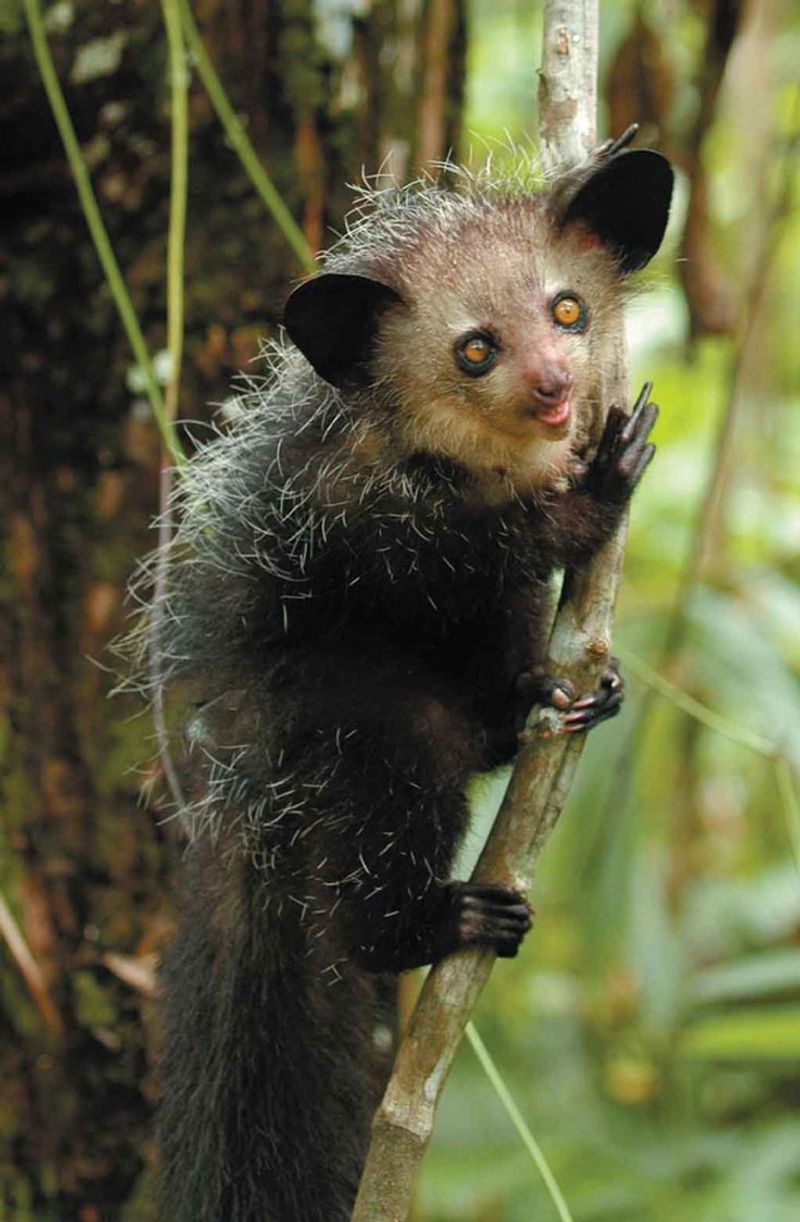
In the heart of Madagascar, the Aye-Aye stands out with its peculiar appearance. Its large, luminous eyes are perfectly adapted for nocturnal foraging. With its elongated middle finger, it taps on trees to find grubs.
This unique hunting method makes the Aye-Aye a fascinating creature of the night. Despite its somewhat eerie look, it plays a vital role in controlling insect populations.
Did you know? The Aye-Aye was once considered an omen of bad luck, but today, efforts are made to protect this extraordinary lemur.
Cat

Cats possess a unique reflective layer behind their retinas known as the tapetum lucidum. This adaptation enhances their night vision by reflecting light that passes through the retina back into their eyes. This not only improves their ability to see in low light but creates the mysterious glow often seen in their eyes at night. Besides, cats have a high concentration of rod cells in their retinas, which are essential for detecting movement. Their night vision is complemented by acute hearing and a keen sense of smell, making them proficient nocturnal hunters.
Ocelot
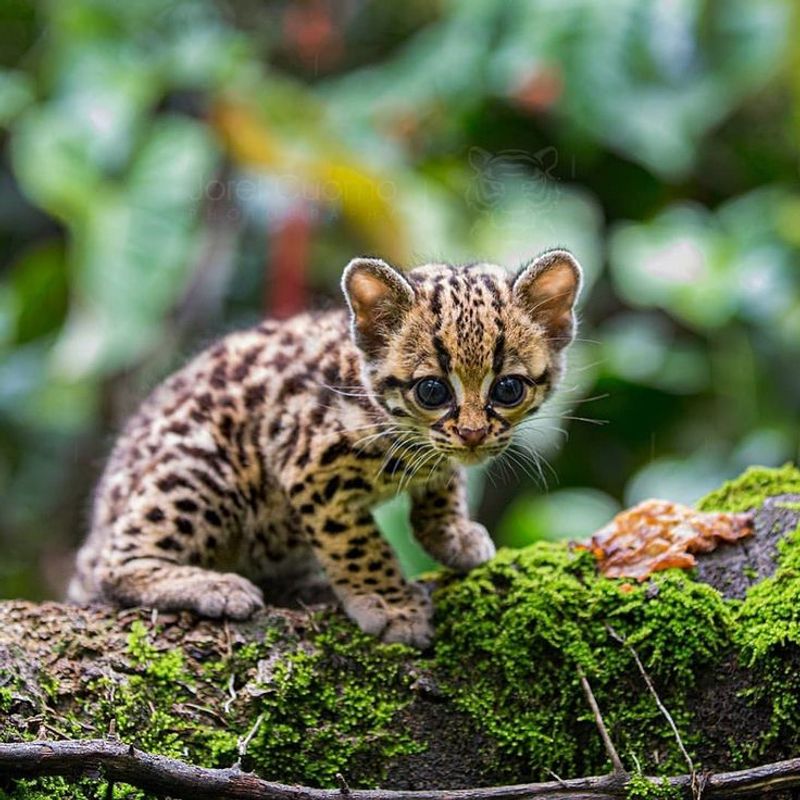
The ocelot, a small wild cat from Central and South America, dazzles with its beautiful coat and impressive night vision. Its eyes, sensitive to low light, make it a formidable nocturnal hunter.
By night, the ocelot silently stalks its prey, relying on stealth and acute senses. This elusive feline is a master of the shadows, blending seamlessly into its environment.
Historically, ocelots have been admired and featured in ancient folklore, symbolizing mystery and grace.
Bat
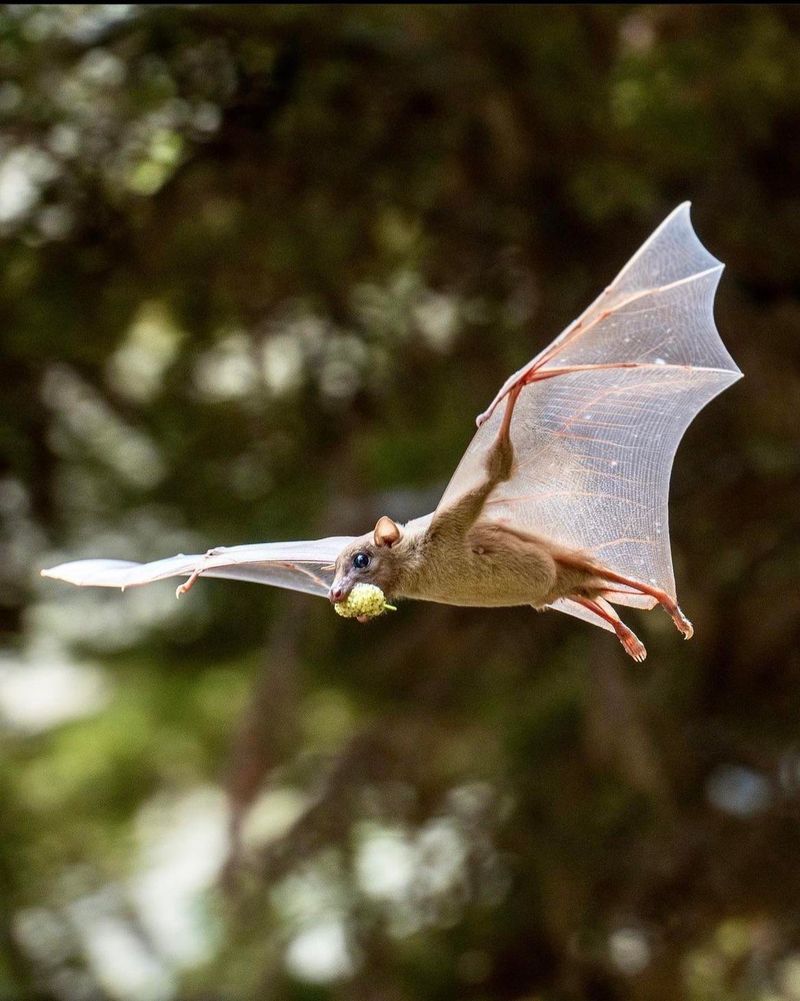
While bats are often thought of as blind, they actually have quite adept vision, particularly in low light. However, their most remarkable skill is echolocation, allowing them to “see” using sound. By emitting high-frequency sound waves, bats can detect obstacles and prey through the echoes that bounce back. This method of navigation is so precise that they can capture tiny insects mid-flight. Echolocation, combined with keen night vision, makes bats exceptional nocturnal navigators. Their ability to traverse dark caves and dense forests with ease is a testament to their evolutionary success.
Tarsier
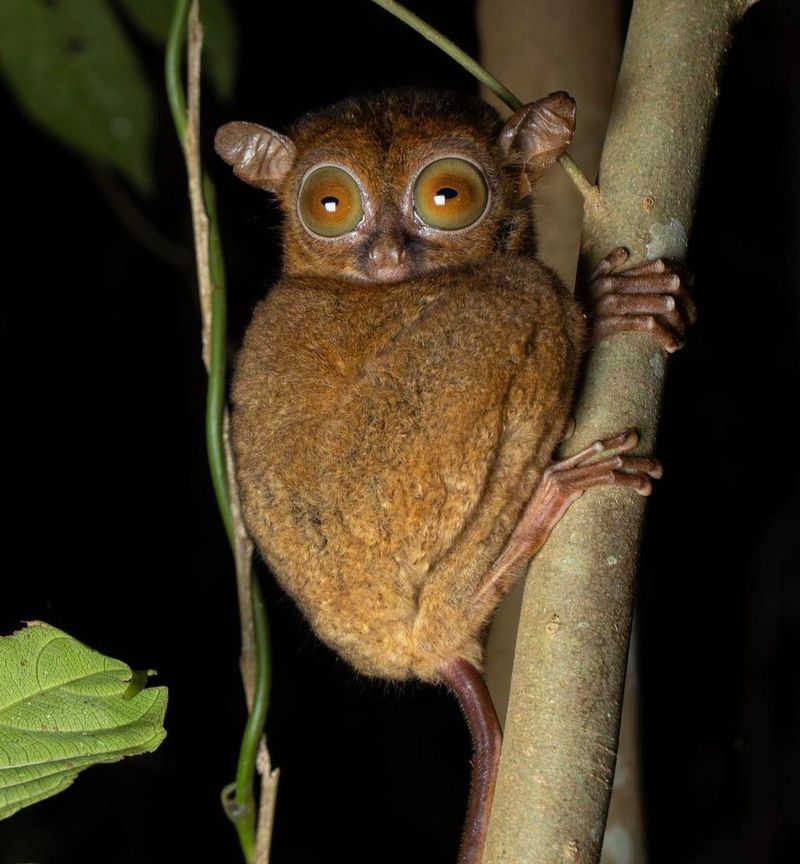
Tiny tarsiers boast the largest eyes relative to their body size in the animal kingdom. These enormous eyes provide excellent night vision, enabling them to hunt insects and small animals under the cloak of darkness. Unlike most primates, tarsiers lack a reflective layer behind their retinas, relying instead on their large eyes to gather light efficiently. Coupled with an acute sense of hearing, they are perfectly adapted to their nocturnal lifestyle. Their eyes are so big that they cannot rotate in their sockets, but they can swivel their heads almost 180 degrees to compensate.
Tawny Frogmouth
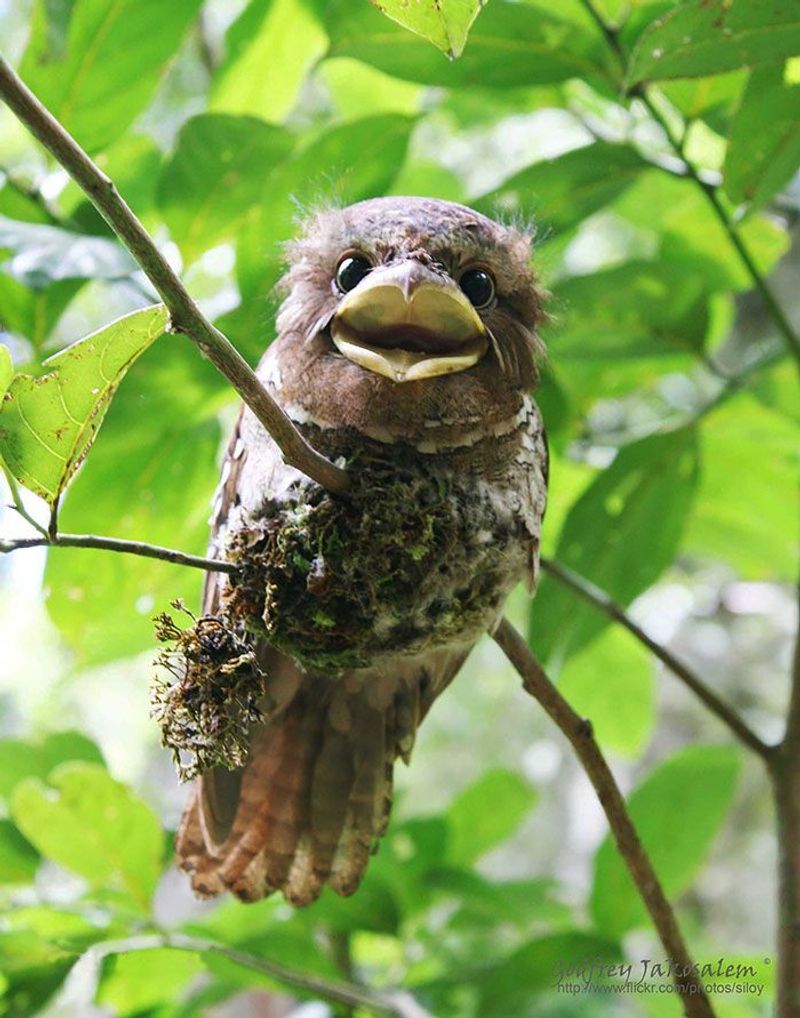
Often mistaken for an owl, the Tawny Frogmouth is a master of disguise. Native to Australia, this bird’s large, forward-facing eyes are built for night vision.
Its camouflaged plumage allows it to blend with tree bark, making it nearly invisible during the day. By night, it becomes an expert hunter, catching insects with precision.
Interestingly, Tawny Frogmouths mate for life, strengthening their bond with duet calls every evening.
Fox
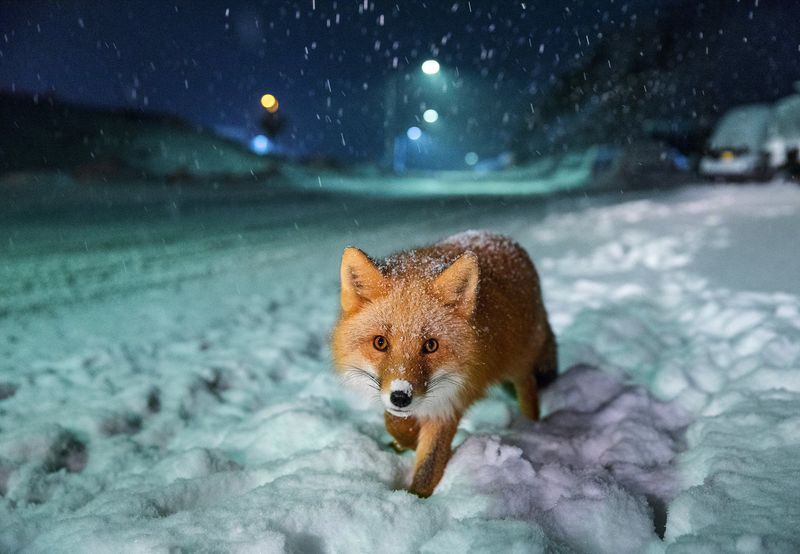
The fox’s adaptability is partly due to its impressive night vision, which allows it to hunt effectively during twilight hours. Their eyes have a high concentration of rod cells that detect light and movement, providing excellent low-light vision. Coupled with a reflective layer behind the retina, this enhances their ability to see in the dark. Foxes are also known for their acute hearing, which aids in detecting the faintest sounds. This combination of keen senses ensures they can successfully locate and capture prey, even in challenging conditions.
Kinkajou

The kinkajou, also known as the “honey bear,” thrives in the dense rainforests of Central and South America. With large, expressive eyes, it navigates the night with ease.
This arboreal mammal is known for its playful nature and long, prehensile tail. At night, it feeds on fruits and nectar, playing a crucial role in seed dispersion.
Fun fact: Despite its nickname, the kinkajou is not related to bears. Instead, it’s a member of the raccoon family, showcasing unique adaptations for a nocturnal lifestyle.
Frog
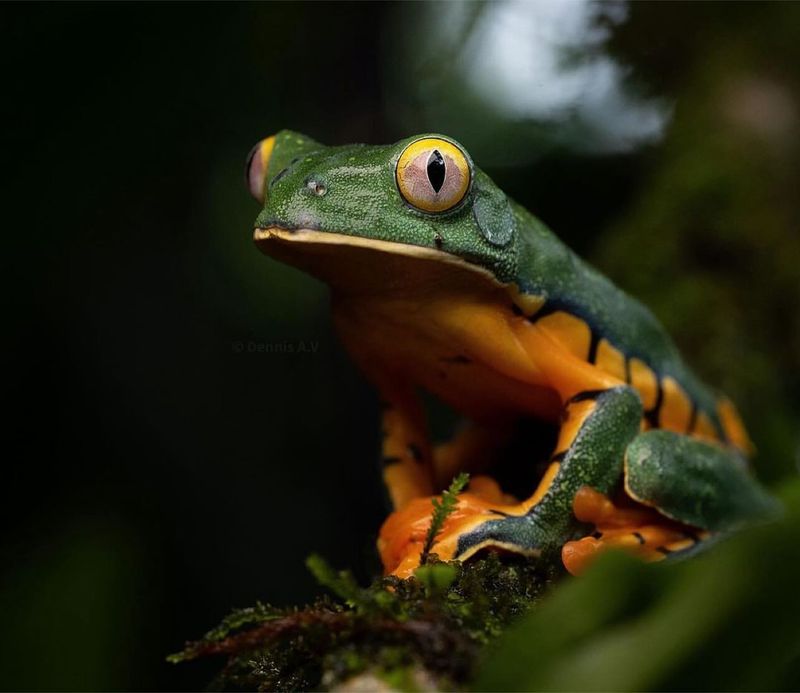
Frogs are equipped with exceptional vision that allows them to be active both day and night. Their eyes are specially adapted to detect movement and see in low light conditions. Frogs have a unique ability to adjust their vision based on the time of day, thanks to their eyes’ structure. This flexibility is particularly advantageous for hunting insects at night. Their large, bulging eyes give them a wide field of view, allowing them to spot predators and prey alike. Combined with their sensitive skin and acute hearing, frogs are well-prepared for nocturnal activity.
Deep-Sea Fish
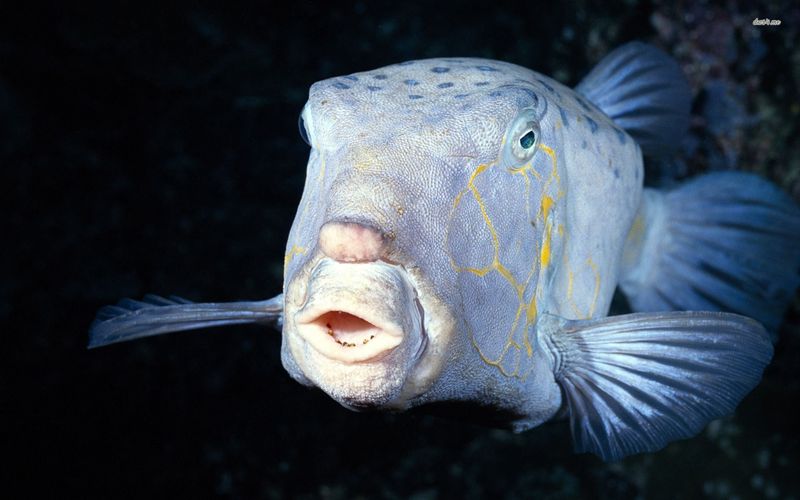
In the inky depths of the ocean, deep-sea fish have evolved to see in near-complete darkness. Their eyes are specially adapted to capture the minimal light available, often from bioluminescent organisms. These fish possess retinas rich in rod cells, enhancing their ability to detect light in the deep sea. Some species even have tubular eyes that allow them to focus on specific areas, maximizing their night vision. This is crucial for spotting prey and avoiding predators in an environment where every advantage counts. Their survival in such a hostile habitat showcases nature’s ingenuity.

